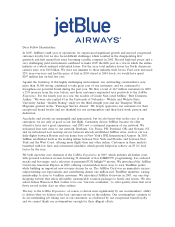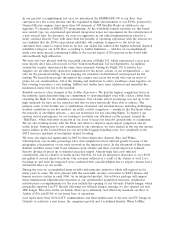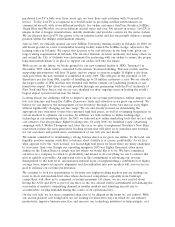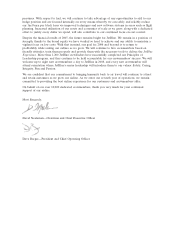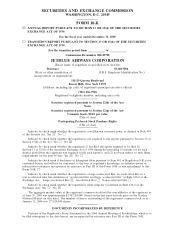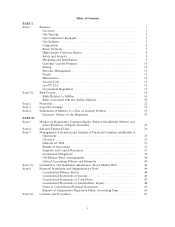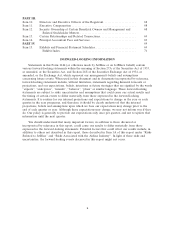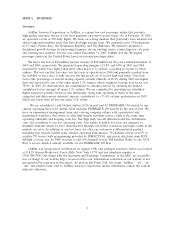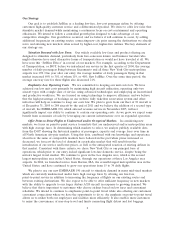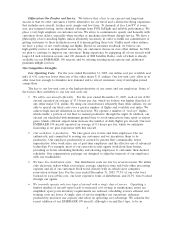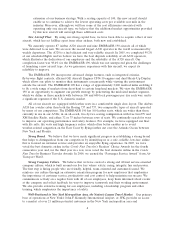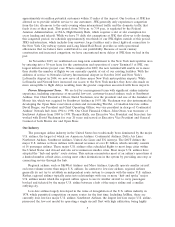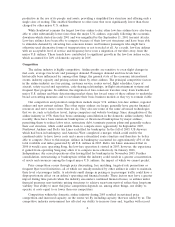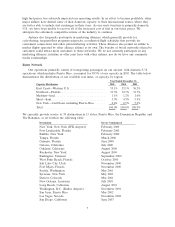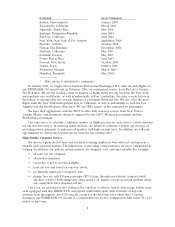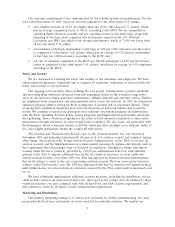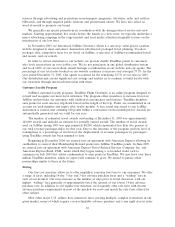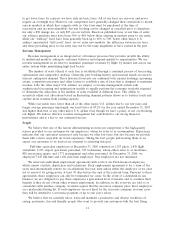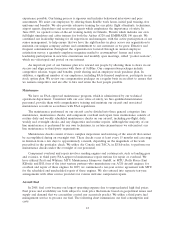JetBlue Airlines 2005 Annual Report Download - page 10
Download and view the complete annual report
Please find page 10 of the 2005 JetBlue Airlines annual report below. You can navigate through the pages in the report by either clicking on the pages listed below, or by using the keyword search tool below to find specific information within the annual report.Our Strategy
Our goal is to establish JetBlue as a leading low-fare, low-cost passenger airline by offering
customers high-quality customer service and a differentiated product. We strive to offer low fares that
stimulate market demand while maintaining a continuous focus on cost-containment and operating
efficiencies. We intend to follow a controlled growth plan designed to take advantage of our
competitive strengths. Our growth has occurred, and we believe it will continue to occur, by adding
additional frequencies on existing routes, connecting new city pairs among the destinations we already
serve and entering new markets often served by higher-cost, higher-fare airlines. The key elements of
our strategy are:
Stimulate Demand with Low Fares. Our widely available low fares and product offering are
designed to stimulate demand, particularly from fare-conscious leisure and business travelers who
might otherwise have used alternative forms of transportation or would not have traveled at all. We
have seen this ‘‘JetBlue Effect’’ in several of our markets. For example, according to the Department
of Transportation, or DOT, before we introduced our service in the first quarter of 2004, the average
number of daily passengers flying between Sacramento and all three New York City metropolitan
airports was 178. One year after our entry, the average number of daily passengers flying in that
market increased 69%to 301, of whom 119, or 40%, flew JetBlue. Over the same time period, the
average one-way fare for these flights also decreased 21%.
Emphasize Low Operating Costs. We are committed to keeping our unit costs low. We have
achieved our low unit costs primarily by maintaining high aircraft utilization, operating only two
aircraft types with a single class of service, using advanced technologies and employing an incentivized
and productive workforce. We are focused on using technology to improve efficiency, and we believe
that the high percentage of bookings on our website, fully ticketless reservation system and other
initiatives will help us continue to keep our costs low. We plan to grow from our fleet of 92 aircraft as
of December 31, 2005 to 284 aircraft by the end of 2011 and we believe the addition of a second type
of aircraft, the EMBRAER 190, which entered revenue service in November 2005, will not
significantly impact our ability to continue to contain our operating costs. As we grow, we expect some
benefit from economies of scale by leveraging our current infrastructure over an expanded operation.
Offer Point-to-Point Flights to Underserved and/or Overpriced Markets. In considering new
markets, we focus on point-to-point service to markets that are underserved and/or metropolitan areas
with high average fares. In determining which markets to select, we analyze publicly available data
from the DOT showing the historical number of passengers, capacity and average fares over time in
all North American city-pair markets. Using this data, combined with our knowledge and experience
about how the same or comparable markets have behaved in the past when prices increased or
decreased, we forecast the level of demand in a particular market that will result from the
introduction of our service and lower prices, as well as the anticipated reaction of existing airlines in
that market. Consistent with these criteria, we chose New York City as our principal base of
operations, which prior to our entry lacked significant low-fare domestic service, despite being the
nation’s largest travel market. We continue to grow in the Los Angeles area, which is the second
largest metropolitan area in the United States, through our operations at three Los Angeles area
airports. In 2004, we launched service from Boston, MA, the seventh largest metropolitan area in the
United States, and have continued to grow our operations from 15 to 34 daily flights.
We plan to use our new EMBRAER 190 aircraft to stimulate demand in many mid-sized markets
which are currently underserved and/or have high average fares by offering our low-fare,
point-to-point service in addition to increasing the frequency of flights on our existing routes and
between existing destinations. We also expect to be able to offer sufficient frequency in new markets
with the ability to upgrade to our larger Airbus A320 aircraft in response to growing demand. We
believe that this is important to customers who choose airlines based on low fares and convenient
schedules. We intend to continue to emphasize point-to-point travel while also offering our customers
convenient connections where we have the opportunity to do so. An emphasis on point-to-point travel
allows us to utilize both our employees and facilities more efficiently. It also enables more customers
to enjoy the convenience of non-stop travel and limits connecting flight delays and lost baggage.
2

